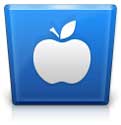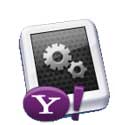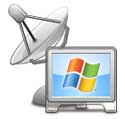I had to reformat my PowerBook recently, and that meant putting back all the software I normally use. Of course I had to put back my word processor, a spreadsheet program, an email program (Ok, I admit it, I use Office), and all the cool Apple programs that originally came with my machine (ever try and restore these?) But I also had, and wanted, again, a handful of what I term “gadget softwareâ€, popularly known as shareware and freeware, programs that I just have to have on all my Macs to make them even easier to use. These are typically not full-fledged applications, but rather smaller applications, utilities, extensions, add-ons, or background tasks and enhancers for your Mac.
What follows is my list of what I believe are some of the “must have gadgets†for the Mac. I do not include some of the more obvious smaller programs like BBEdit, Stuffit Deluxe, Timbuktu, Virtual PC (or Parallels), or programs like them, because I consider them to be “full apps†and not fun “gadgets.†This list is only for gadgets and fun, smaller applications only.
Of course, you list will vary, and I hope you will post below this article what your favorites are and why you like them (please stick to “gadgetsâ€,) but here is my list and a brief review of each. These are in no particular order of importance, but rather in the order as I remembered them and I reinstalled them onto my PowerBook. Also note that almost all of these can be downloaded for a free (good) or a free trial (another requirement to be on this list), so you can see if you like it before you buy it, which I feel, is essential for ANY software. If I cannot try it first, I typically will not buy it. So on to my list:

Little Snitch by Objective Development
http://www.obdev.at/products/littlesnitch/index.html
$24.95
This may not be important to you, but I really want to know when one of my running applications decides it wants to talk over the Internet. Too many apps these days “phone homeâ€, basically telling the publisher of the software many things about you, the computer user, that you may not wish to actually share with these people. Things like what apps are running on your machine, your IP address, both public and private, your MAC address, your registration number, what files you opened, etc. etc. Personally, once I buy a piece of software, I do not want it calling back home to report what I am doing. Enter Little Snitch. This small program runs in the background, and watches for any application or process that tries to connect to the Internet. When that happens, a dialog will pop up , report what app is trying to send data and where, and give you the ability to allow it to always communicate, communicate only once, or only communicate this time until the app quits.
It seems that many applications do try and check for updates, and if you know this, you can allow it to talk one time. Some applications, like iChat, want to talk all the time, and these you may say it is OK forever. But what about that shareware program that you just downloaded? Is it reporting things back to the publisher? With Little Snitch, you, and not the application are in control of what these apps may and may not do.
If you are worried about companies knowing more about you than you wish to let them know, this is a must.

FruitMenu by Unsanity
http://www.unsanity.com/haxies/fruitmenu/
$10
When OS-X replaced the Classic OS, I felt some things got left behind, especially around the Apple menu. For example, my Dock is already WAY too full of program that I wish to easily access, and I used to do this from Apple Menu. I also miss hierarchical menus in the Apple Menu, especially of my applications, utilities, and documents folders, which I also used to access under the Apple Menu in OS-9 for quick access to these folders and applications.
FruitMenu returns some of those things you might just miss from Classic and adds a few new things that make life easier too. For example, I can add almost any item to my Apple Menu I wish. For me, something I use almost every day is a display of my IP address. This is GREAT when I am roaming on wireless networks or switch from wired to wireless or back and wonder if I am truly connected. I simply click on my Blue Apple icon and I instantly see if I have a real IP address assigned or not by looking at the address now displayed in the Apple menu.
Features also include the ability to put any folders, files or complete disks in the Apple and Contextual menus for easy navigation; Speed up your system by disabling menu fadeout effect; Open any document with applications of your choice through new, user controlled contextual menus on documents and applications; Preview graphics right in the menu; Set the desktop picture with a single click from a contextual menu; Browse contents of selected folders in a menu; and organize the Apple menu in any way you see fit, adding items and separators, removing things you do not use, and adding contextual menus as well.
FruitMenu goes one step further by allowing you to have a custom menu for each and every application if you like, meaning that items appear and disappear depending on what app you are running.
For $10, this is some of the best functionality money can buy, and once you use it, you will want it.

VLC Media Player
http://www.videolan.org/vlc/
Free
QuickTime is great, but it does not play everything I seem to get from the Internet. Forget about Windows Media Player, and there is little chance that Real Player will ever touch my machine. So how do I watch some of the newer content that I receive or download? I use VLC.
VLC is a fairly simple player for just about every platform out there. There are versions for Windows, Mac OSX, BeOS, Fedora Core, WinCE, Zarus and at least 9 flavors of Linux as well. VLC is a highly portable media player that can play, without any further downloads of codecs, MPEG-1, MPEG-2, MPEG-4, DivX, mp3, ogg, plus others. It can also directly play VCDs, DVDs, CDs, and various streaming protocols as well. And, it can also be used as a server to stream in unicast or multicast in IPv4 or IPv6 on high-bandwidth networks.
In a nutshell, if VLC cannot play the video file, you do not need to view it. With few exceptions, it just works fine every time, and has of yet failed to play any Divx, DVD, or media file I have downloaded. The interface is fairly straightforward with the usual control buttons for play, skip forward and backward, fast-forward and back, Stop, skip to end, and volume. In addition, play lists can easily be created for a long set of items. Menus give you access to open a file, a disk, or a network steam, and if available, multiple video and/or audio stream selections are easily picked here as well. You can also select from multiple denterlace methods to improve picture quality, and VLC fully supports subtitle files as well, displaying the appropriate subtitle text over the video.
In a nutshell, this is the most complete and easy to use video player available for the Mac that will play just about anything. And for free, it is a bargain.

Google Earth
http://earth.google.com/
Free
Essential? No. An amazing time sink and incredibly fun pieces of software with which to play? Absolutely! Now in Beta 4, for free, I highly recommend this little gem of a program be on your Mac (and of course, it is available for many other platforms too.)
So what can you really do? How about flying from space right into your neighborhood? Or just type in an address and Google Earth will zoom right into that location. Or, pick a local area and then ask Google Earth to search for schools, parks, restaurants, and hotels nearby. Once you find the place you want to go, it can get you driving directions as well and see them displayed right on the globe. It is cool to look at your work or home address from space, or in my case, to see that they people who bought my house removed the swimming pool in the last 10 years! Or look at the earth from space, then fly into a city and tilt and rotate the view to see 3D terrains. In some cases, you can even see building details, parked cars and sometimes people depending on the quality of images available for that area.
Google Earth allows you to save and share your searches and favorites as well as add your own annotations to those spots. It comes with an extensive API for add-ons, and even more fun, a number of advertisers have done advertising games with Google Earth. Mazda’s recent “Earth Search†contest where clues were given and using Google Earth, you had to find the location that they annotated onto the map. It was actually a lot of fun. See this blog for more details of how it worked, because I do not think the game is available any more: (http://www.gearthblog.com/blog/archives/2006/05/win_a_mazda_cx7.html)
For free, this program is educational, informative, and a damn lot of fun too.

Konfabulator, now known as Yahoo Widgets from Pixoria
http://widgets.yahoo.com/ and http://www.widgetgallery.com/
Free
While I think Apple’s widgets are fine, it truly bothers me that I have to enter a whole different mode to see or use the widgets. Long before Apple put them into OS-X, there was Konfabulator. This was a product that you had to buy for around $25, and at that price, I found it very worth the cost. Now, since Yahoo has bought it it, it is free for Windows and Macintosh, so it is truly a steal.
With over 3000 widgets and growing (3191 to be exact as of this writing) there is probably a widget to do exactly what you want, and a fairly good developers guide to even write your own. Like Apple’s widgets, these are small programs that give you small functionality without running an entire application. But unlike Apple’s widgets, these can be placed on, above, or even as part of your desktop, basically giving you a dynamic desktop.
I have my favorites stuck into the desktop which run all the time, including a large battery image that shows my charge remaining or time to full (which freed up some seriously needed menu space), an analog clock (again, freeing up needed menu space) and something showing the moon phase, because one never knows when you might meet a werewolf. But I also have a widget that pops up a transparent window showing me when one of my buddies enters or exists iChat. This pop-up appear, “floating†over the desktop, is not clickable, and does not interfere with what I am currently doing at that time, but lets me know that someone has joined or left iChat. I also have the temperature of my processor displayed on my desktop as well. There is even a Widget to tell you the temperature of your networked TiVo if you like. Yahoo Widgets also includes the ability to display a Widgets only screen, much like Apple’s widgets.
Yahoo Widgets will work just fine along side of Apple’s widgets (they do NOT run each other’s widgets) and using them both gives you constant widget data where you need it, and windowed widget data where it makes sense.
If you are still not sure, go to the widget gallery listed above and have a look through the array of widgets. All this for free? Can’t beat the price of functionality. In my opinion, this is what Apple’s widgets should have been.

Marine Aquarium by SereneScreen.com
http://www.serenescreen.com/product/
$19.95
What once started as a well-done simple screen saver is now one of my favorite screen “toys.†This product continues to give the most realistic looking marine aquarium on your desktop I have ever seen anywhere, with regular improvements and updates all the time. In fact, it is so good, that the Roku product (http://www.progressive-av.com/multi_room/roku_hd1000_digital_media_player.htm), a gadget to display photos on your high definition monitor, included this as their standard screen saver. And I own a 55-gallon salt-water marine aquarium tank at home, and this program is more fun to watch than my tank, and just as realistic, and a lot less work too. And it never needs cleaning!
Now with over 23 different fish, which are incredibly realistic, these fish are actual 3D Models, not some simple flat images dragged across the screen as in other screen savers. The latest version now supports multi-monitors, widescreen display, and it even properly conforms to custom aspect rations. And if you have used this software before, the latest version now incorporated the crystal clock as part of the same program. This can run as your screen saver, or launch the application to open an aquarium window on your desktop, or expand it to cover the entire screen. Realistic bubbles accompany the realistic fish, and a very well done lighting effect, complete with reflected ripples.
When stress rises, switch this on and just watch the fish. The life-like movements and rendering have the same effect as watching a real aquarium, and these you do not have to feed.

Pacifist by CharlesSoft
http://www.charlessoft.com/
$20
Pacifist is a small program that attempts to do in Mac OS X what TomeViewer did in Mac OS 9. Basically, it allows one to open up installer packages (.pkg) and view, install or extract individual files out of these packages. Big deal you say? Well, if you never need it, you probably will not care. But when the time comes that you wish you could do this, this is the tool to have.
This is especially useful if, for example, you deleted one part of a full install and ONLY want to reinstall the component. For example, suppose you deleted Spotlight and need to reinstall it, but not the whole operating system? Use Pacifist to install just one file out of a package instead of the entire package. If you just want a little more control over the installation process, this gives it to you. Pacifist can also update pre-binding information for files that you install to optimize their performance, as well as verify existing installations and find missing or altered files when a program becomes damaged, and you would rather not reinstall it.
Pacifist is 10.4 compatible, and also works with Universal Binaries. Curious as to what exactly is inside those installer packages, and what will be installed, have a look now before you install.

SlimServer by Slim Devices
http://www.slimdevices.com/su_downloads.html
Free
Slim Devices makes a VERY cool media player for your home that I reviewed quite a while ago (https://www.mymac.com/showarticle.php?id=1333) in 2004. The device has received many upgrades many times since then, and is one of the coolest music toys I have ever used. That said, you do not need to own their device to get their free software called SlimServer.
Why should you care about the software when you do not have the device? Because this server, which runs in the BACKGROUND on your Mac (or a Windows machine), basically takes all your iTunes music (except Apple Store songs) and servers then up to ANY streaming media player, including iTunes and the VLC mentioned above.
If you have more than one Mac, or if you own some other device that will play streaming MP3s (maybe even your TiVo), then this free server will let you share ALL that music without having to move a single file. Completely controlled via a built-in web interface on any web browser, you can play one song, build a play list, and even play your existing play lists in iTunes. And, if you have streaming favorites in iTunes, those too can be streamed as a playlist to another machine. The built-in web system allows you to control ANY server connected to your machine from ANY web page anywhere.
So for me, my home machine runs SlimServer, and at work, I simply listen to my music collection via a stream, all controlled by a web page at work. No music to copy, no violating any music copyright laws by copying the music, and complete access and control over my entire library.
Set up of a player can be a little tricky, but the server includes excellent documentation all available via the web interface as well. And should you really like this and want to stream to your stereo system, you might consider the Squeeze Box. It integrates into this server via both web interface, and its own remote control and built-in display, to easily access all your music on your home system too.
And did I mention, the server is FREE!

Remote Desktop Connection
http://www.microsoft.com/mac/otherproducts/otherproducts.aspx?pid=remotedesktopclient
FREE
Not to be confused with Apple’s Remote Desktop, this is, and I am sorry if I offend anyone, a FREE Microsoft product. This is included in Microsoft’s Office Suite of products, but can also be downloaded for free from Microsoft at the link above.
Becoming more of a reality every day, those of us who use a Macintosh are also often required to use or access a Windows machine as well. In my case, a Windows machine is required at my work, and I do not own an Intel Mac. That means I now have two machines at work, my Mac and their PC. They would like me to carry the PC home to do work in evenings and weekends, but because I carry my Mac to work, I will only carry one computer home. If I need to do some work from home, I simply VPN into the office network from my Mac, and use Remote Desktop Connection to remotely control my work machine right on my Mac.
I also must admit that I have an XP machine at home that runs some of my home security software, an email server and other services, and I often want to connect to this machine from work as well. Remote Desktop Connection allows me to do that as well.
Remote Desktop Connection is a small application that gives you full remote access to your Windows desktop. Similar to the software with the same name on Windows, simply put in the IP address of the target computer, and assuming that its remote services are turned on, you will be presented with a login screen for that Windows machine. Either full screen or in a scrolling window, the target screen is locked, and you have full control as if you were sitting at the machine. Sounds can be played on the remote machine, the locals Mac, or turned off all together, and the ALT key can be user defined locally. Right clicks can be sent from a two-button mouse or via a CTRL-Click function as well. You can also have your local Macintosh disks and Printers mounted on the remote machine for easy file copying, select the size of the remote screen, and even choose which display of you want to view the remote screen if you have multiple monitors. And a number of options allow you to optimize what is sent from the remote machine depending on the speed of your connection.
When I need something on my work computer, or need to access something on my headless Windows box (means it has no monitor) Remote Desktop Connection allows me to run those machines right from my Mac as if I were on those machines.
For a free application, if you need remote access to a Windows machine, this is something to seriously consider.
I originally planned to include Hardware Monitor by Marcel Bersink Software-Systeme as I think this is a cool little application to monitor all the sensors in your Mac, and Marcel has written some great apps in the past. Unfortunately, a company called element5, a German software distributor, controls licensing of this product. I have recently had problems with a piece of data recovery software I purchased through element5 which did not work and only crashed my Mac, and element5 would do nothing to aid in the refund of my money on this defective product, rather leaving me at the mercy of the publisher who also did little to help. Their customer service was poor, and as such, I swore I would not buy software form them again since they are eager to sell it, but not so eager to support it or you after the purchase. Consider this product at your own risk, as with any other software sold by element5.

TinkerTool by Marcel Bersink Software-Systeme
http://www.bresink.com/osx/TinkerTool.html
Free
All that said above, another product by Marcel Bersink Software-Systeme is well worth downloading, and it is free. As I said, this guy makes great software, and one free item, TinkerTool is one of those items you did not know you needed until you try it.
There are a lot of hidden preferences and settings built into OS-X that Apple does not give you easy access to. With TinkerTool, you can activate hidden features of the operating system and also in some applications as well.
Here is just a quick sample of what you can change: In the Finder, you can switch on and off hidden file display, disable sound effects, disable Desktop features, disable the full list of users and groups in ownership settings, and add a Quit item to the Finder menu. You can also toggle showing animated effects when opening files, animated opening info panels and desktop icons, and when selecting info panel categories. You can also prevent the Finder from creating hidden .DS_Store files over a network, so you don’t leave little Mac “turds†when browsing Windows networks. Other options are available for the Dock, general, applications, fonts and font smoothing, permissions, and Safari. And one of my favorites, being able to turn on developer mode for Dashboard, allowing you to drag Apple’s widgets to the desktop.
You also should not need administrative privileges to use the tool to change settings, and the tool makes sure that changes only affect the current user and app, as the program will never change any component of the operating system. The integrity of your system is never put at risk, there is no negative impact on your system or any upgrades, and the settings can easily be altered and reset to either Apple’s default or the state they existed before you changed them.
OK, that is my list. Do let me know if you try any of these and tell me what you think, and also let me know what items you have on your own list as well.

Leave a Reply
You must be logged in to post a comment.